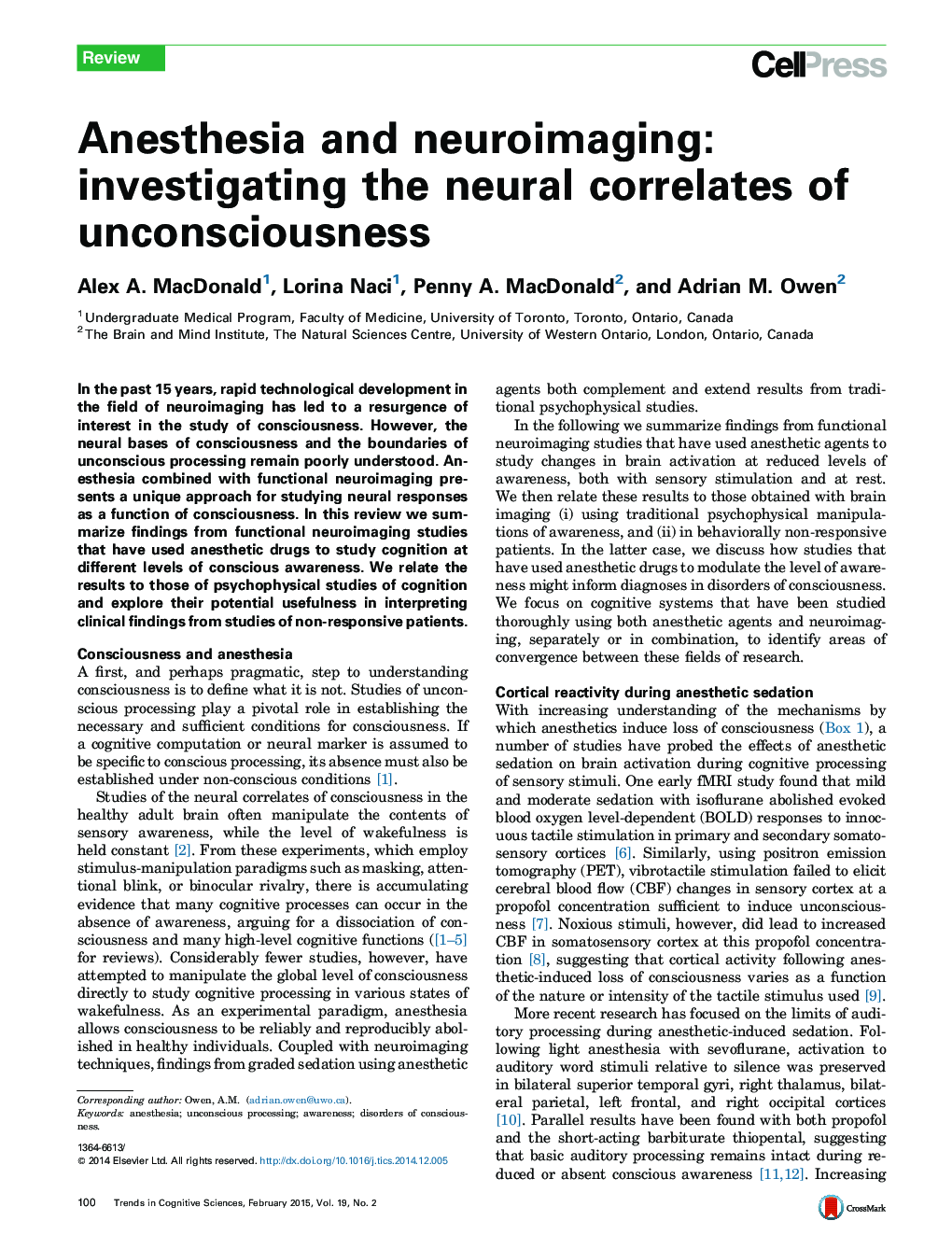| کد مقاله | کد نشریه | سال انتشار | مقاله انگلیسی | نسخه تمام متن |
|---|---|---|---|---|
| 141455 | 162880 | 2015 | 8 صفحه PDF | دانلود رایگان |
• Anesthetic sedation and neuroimaging are often combined to study the neural substrates of consciousness.
• With increasing sedation, complex cognitive processes are impaired before more-basic processes at sensory processes.
• Sedation disrupts processing between cortical networks, and in association cortices before sensory cortices.
• These studies are essential for interpreting brain activity in patients with disorders of consciousness.
In the past 15 years, rapid technological development in the field of neuroimaging has led to a resurgence of interest in the study of consciousness. However, the neural bases of consciousness and the boundaries of unconscious processing remain poorly understood. Anesthesia combined with functional neuroimaging presents a unique approach for studying neural responses as a function of consciousness. In this review we summarize findings from functional neuroimaging studies that have used anesthetic drugs to study cognition at different levels of conscious awareness. We relate the results to those of psychophysical studies of cognition and explore their potential usefulness in interpreting clinical findings from studies of non-responsive patients.
Journal: - Volume 19, Issue 2, February 2015, Pages 100–107
